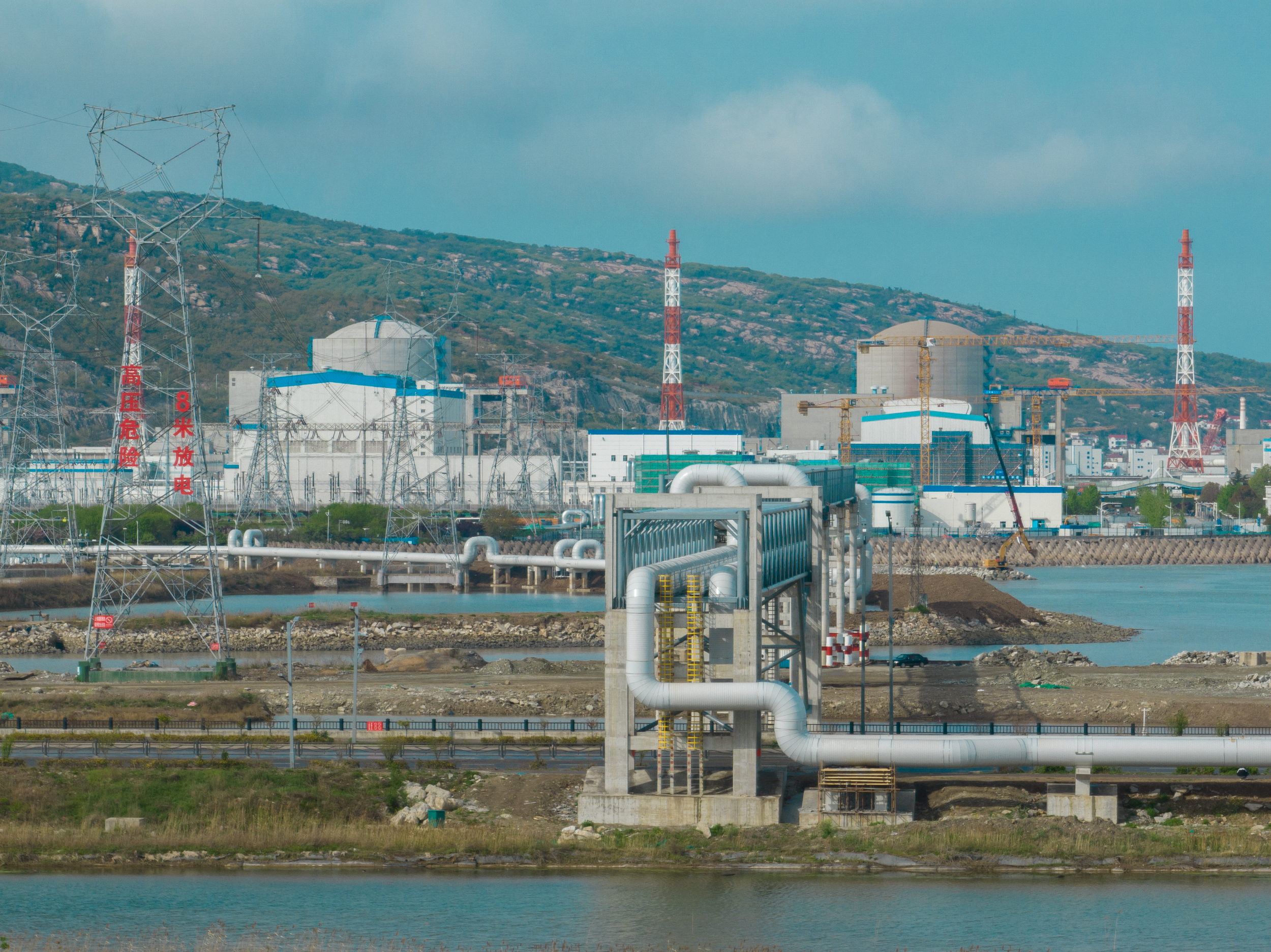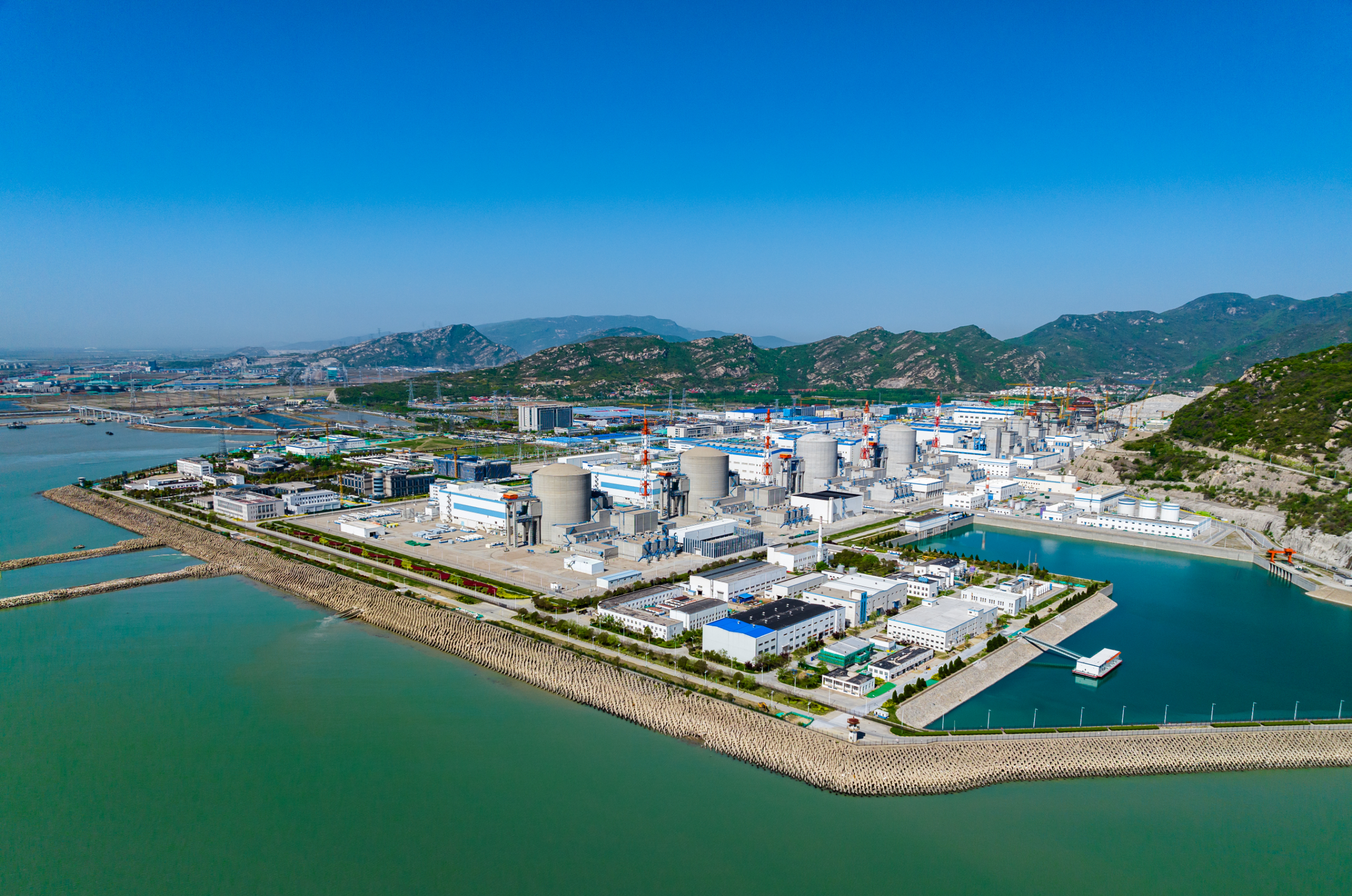Nuclear energy generates "steam" and adds greener! my country's first industrial nuclear energy steam supply project was completed and put into operation
At the Tianwan Nuclear Power Base in Lianyungang City, Jiangsu Province, the "cross-border combination" of nuclear energy and petrochemical industries has a new green linkage.
On June 19, my country's first industrial nuclear energy steam supply project-the "Heqi No. 1" project was officially completed and put into operation at the Tianwan Nuclear Power Base owned by China Nuclear Power Investment and Holding, a subsidiary of China Nuclear Power Corporation. So far, my country's comprehensive utilization of nuclear energy has further expanded from single power generation to meet the heating of urban residents into the field of industrial steam supply.
The reporter saw at the scene that a 23.36-kilometer-long silver-white pipeline extended from Tianwan Nuclear Power Base to the distance. Beams of "zero-carbon steam" were constantly rushing from here to the Lianyungang Petrochemical Industrial Base, injecting it into the petrochemical industry. Clean "nuclear power" for industrial production.
How to use nuclear energy to achieve industrial steam supply? How to ensure the safety of nuclear power steam supply? The reporter recently followed CNNC's media tour to the Tianwan Nuclear Power Base to reveal the answer to the question.
Nuclear energy produces "steam"
People often use the image of "boiling water" as a metaphor for the principle of nuclear power generation: nuclear power plants rely on energy released by nuclear fission to heat water into steam, thereby driving steam turbines to generate electricity. However, the high-temperature steam produced by "boiling water" can not only be used to generate electricity. In the industrial field, these steams are also of great use.
"For petrochemical companies, steam is an indispensable heat source and power source in their production process. Using nuclear energy to replace coal consumption for heating, steam supply, and power supply is the preferred solution for the petrochemical industry under the dual challenges of ensuring stable supply and clean and low-carbon transformation." Zhang Yi, Secretary of the Party Committee and Chairman of Jiangsu Nuclear Power Co., Ltd., told reporters.
The "roadmap" for energy conservation and carbon reduction formulated by the state has pointed out the path for nuclear energy to help green upgrading of traditional industries. In May 2024, the "2024-2025 Action Plan for Energy Conservation and Carbon Reduction" issued by the State Council clearly proposed to promote the reengineering of petrochemical and chemical processes. Orderly promote the change of steam drive to electric drive, and encourage large petrochemical and chemical parks to explore the use of nuclear energy for steam and heat supply.

The picture shows the steam energy supply pipeline. Map provided by CNNC
How does nuclear energy generate steam? "Just like boiling water at home, there are two necessary conditions for generating steam, water and heat source. The heat generated by the primary circuit of the nuclear power plant heats the water in the secondary circuit through a steam generator to produce high-temperature and high-pressure steam. Part of the high-temperature and high-pressure steam is extracted as a heat source, and the fresh water produced by the desalination plant is heated in the heat exchange station to turn the fresh water into steam that meets industrial standards. The heated steam is then transmitted to the steam consumption end through the three-loop pipe network." Ye Feng, Director of the Business Planning Department of Jiangsu Nuclear Power Co., Ltd., introduced the principle of nuclear power steam supply to reporters.
Four safety barriers: "boiling water"+"self-heating pot"
The four safety barriers of nuclear power units ensure the safety of nuclear power steam supply from the source.
"In nuclear steam supply, only heat exchange is involved, and there is no material exchange of water or steam, so the safety of industrial steam can be ensured to the greatest extent possible." Wu Wenqi, deputy director of the Second Operation Division of Jiangsu Nuclear Power Co., Ltd., told reporters.
Wu Wenqi likened the process of nuclear power steam supply to a combination of "boiling water" and "self-congratulating the pot". "'Heqi No. 1 'uses the secondary loop steam from the original units 3 and 4 of Tianwan Nuclear Power as the heat source, which is equivalent to the heating package under the' Zihi Pot ', and above the' Zihi Pot 'is desalinated seawater. Salt water. The heating bag only exchanges heat with the food, and there is no material contact. The heating bag will not stain the self-heating pot."
In order to ensure the safety of steam supply, in addition to adding the third loop to physically isolate safe and reliable steam, the "Gas No. 1" project also innovatively added rapid isolation valves and radiation monitoring instruments to achieve real-time monitoring and rapid isolation of radiation values.
"It's like installing two 'silver needles' for testing food safety in a 'boiling water' kettle and a 'self-heating pot.' Gas No. 1 'has added radiation monitoring instruments to the main steam extraction pipeline and industrial steam pipeline. When an abnormality in the radiation instrument exceeds a critical value, the isolation valve will quickly close within 5 seconds to ensure radiation protection safety." Wu Wenqi explained to reporters.
The breakthrough behind "zero-carbon steam"
Behind the steady stream of "zero-carbon steam" is the attempt of "Heqi-1" to break the situation as the country's first nuclear power steam supply project.
There are no nuclear energy steam supply project cases at home and abroad for reference, which means that the "Qi Qi-1" project is destined to be an exploration of "crossing the river by feeling the stones". Li Yegang, director of the Maintenance Support Department of Jiangsu Nuclear Power Co., Ltd., used a series of numbers to describe the situation faced at the beginning of the project: "In the preliminary design stage alone, more than 1000 design review opinions were put forward. The amount of renovation work on operating units is as huge as building a conventional island with a million-kilowatt nuclear power unit."
Wu Wenqi, who participated in the entire debugging phase of the steam power supply project, still remembers that in order to verify the impact of the full removal of the steam power supply project on the nuclear power unit under extreme working conditions, a debugging experiment was carried out to ensure that "the valve time was closed for 2.44 seconds and the parameters were stable for 10 minutes". Behind the success of the experiment, everyone prepared for two months before the test, and more than 300 people worked together to fight hard during the test.
"Once faced with extreme situations of steam source removal, the power of both the reactor and generator will change greatly. The extreme case experiment of steam source removal involved nearly 300 people from multiple majors such as design units, civil engineering and installation, equipment manufacturers, operation operations, and emergency repair and standby, and there were countless problems in cooperating with the preparation." Wu Wenqi explained to reporters.
During the project debugging phase, the team first demonstrated the entire process repeatedly in the simulation room, predicted the results in extreme circumstances with the system response, and then repeatedly deduced the entire process of the review experiment through the predicted results. "Which parameters may exceed limits in experiments?" "What should I do after exceeding the limit?" It has become a question that has been lingering in the minds of Wu Wenqi and his colleagues for two months, and has been repeatedly verified between paper and pen.
Two months of team cooperation finally returned to a 2.44-second success answer. On the day when the debugging test was successfully concluded, at three o'clock in the morning, Wu Wenqi used his mobile phone lens to record the night outside the Tianwan Nuclear Power Base building. He only added a simple caption to his circle of friends-"The moonlight is so beautiful tonight."
Recalling the process along the way with the "Harmony No. 1" project,"It's like watching your child prepare for a college entrance examination. The process is too challenging and problems are solved every day. Now that the 'Heqi No. 1' project has been successfully put into production, it feels like my child has finally been admitted to an ideal university." Wu Wenqi told reporters.
The zero-carbon value of nuclear energy
Today, nuclear power steam supply has delivered an eye-catching green report card.
A set of data reveals the green background of nuclear power steam supply. Compared with traditional coal burning to obtain steam, nuclear energy greatly reduces carbon emissions in steam production. According to estimates, after the project is completed, the annual steam supply will reach 4.8 million tons, which can equivalent emissions reduction of 1.07 million tons of carbon dioxide, 184 tons of sulfur dioxide, and 263 tons of nitrogen oxides, equivalent to 2900 hectares of new afforestation area. At the same time, with the gradual development of "carbon accounting" in the future, it can also save more than 700,000 tons of carbon emission indicators for petrochemical bases every year.

The picture shows a panoramic view of Tianwan Nuclear Power Base. Map provided by CNNC
Ye Qizhen, an academician of the Chinese Academy of Engineering, said that the coupled development of comprehensive utilization of nuclear energy and high-energy-consuming industries will further highlight the zero-carbon value of nuclear energy, meet the diversified energy needs of high-energy-consuming industries, and provide decarbonization technology solutions for high-carbon emission industries. Support the construction of large national chemical bases and large industrial bases, which is highly consistent with the country's deployment of green and low-carbon industrial transformation.
In recent years, my country's comprehensive utilization of nuclear energy is showing a diversified development situation. Nuclear energy has gradually demonstrated its zero-carbon value in fields such as heating, heating, and steam supply. It also plays an important role in fields such as isotope production, hydrogen production, and seawater desalination.
On April 1, 2024, my country's first cross-prefecture-level city nuclear energy heating project-State Power Investment Corporation's "Warm Nuclear No. 1" Phase III completed its first heating season task, providing 12.5 million square meters of continuous safe and stable heating for 127 days. On April 20, carbon-14 targets were successfully extracted from the Qinshan Nuclear Power Heavy Water Reactor Unit, breaking the problem of relying on imports of this isotope and achieving full localization of carbon-14 supply.
Huang Ping, Secretary-General of the National Atomic Energy Agency, said that in recent years, the National Atomic Energy Agency has vigorously promoted the comprehensive utilization of nuclear energy and the extensive application of nuclear technology in industry, agriculture, medical care, environmental protection, safety and other fields, and supported the implementation of a number of projects such as nuclear energy steam supply. Facing the future, the National Atomic Energy Agency will cultivate and incubate a number of new projects for comprehensive utilization of nuclear energy and nuclear technology application, build a green, prosperous, prosperous, healthy and peaceful "nuclear beauty home", help achieve the "double carbon" goal, and promote high-quality development and enhance people's livelihood and well-being.







